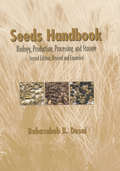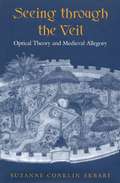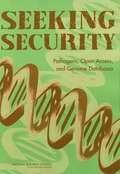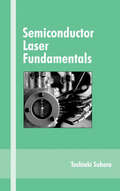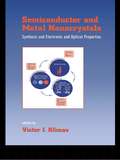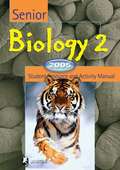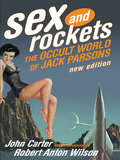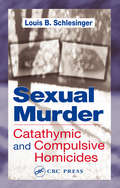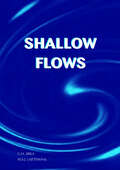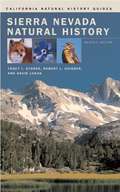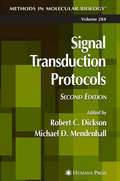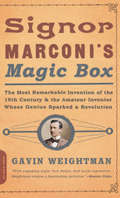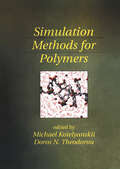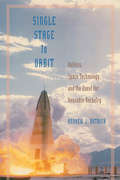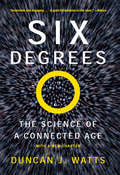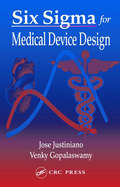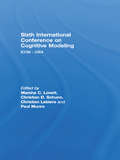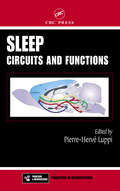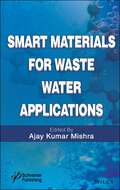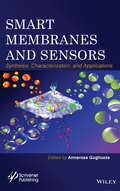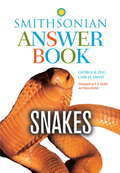- Table View
- List View
Seeds Handbook: Processing And Storage
by Babasaheb B. DesaiRevised and expanded throughout, this latest edition of the bestselling Seeds Handbook: Biology, Production, Processing, and Storage includes valuable information on all areas of seed biology, production, and processing. The author, one of the most respected and prolific scientists in the field, identifies current developments in seed testing and c
Seeing Through the Veil
by Suzanne Conklin AkbariDuring the later Middle Ages, new optical theories were introduced that located the power of sight not in the seeing subject, but in the passive object of vision. This shift had a powerful impact not only on medieval science but also on theories of knowledge, and this changing relationship of vision and knowledge was a crucial element in late medieval religious devotion. In Seeing through the Veil, Suzanne Conklin Akbari examines several late medieval allegories in the context of contemporary paradigm shifts in scientific and philosophical theories of vision.After a survey on the genre of allegory and an overview of medieval optical theories, Akbari delves into more detailed studies of several medieval literary works, including the Roman de la Rose, Dante's Vita Nuova, Convivio, and Commedia, and Chaucer's dream visions and Canterbury Tales. The final chapter, 'Division and Darkness,' centres on the legacy of allegory in the fifteenth century. Offering a new interdisciplinary, synthetic approach to late medieval intellectual history and to major works within the medieval literary canon, Seeing through the Veil will be an essential resource to the study of medieval literature and culture, as well as philosophy, history of art, and history of science.
Seeking Security: Pathogens, Open Access, and Genome Databases
by Committee on Genomics Databases for Bioterrorism Threat AgentsWithin the last 30 years, the genomes of thousands of organisms, from viruses, to bacteria, to humans, have been sequenced or partially sequenced and deposited in databases freely accessible to scientists around the world. This information is accelerating scientists' ability to fight disease and make other medical advances, but policymakers must consider the possibility that the information could also be used for destructive purposes in acts of bioterrorism or war. Based in part on views from working biological scientists, the report concludes that current policies that allow scientists and the public unrestricted access to genome data on microbial pathogens should not be changed. Because access improves our ability to fight both bioterrorism and naturally occurring infectious diseases, security against bioterrorism is better served by policies that facilitate, not limit, the free flow of this information.
Semiconductor Laser Fundamentals (Optical Science and Engineering)
by Toshiaki SuharaRanging from fundamental theoretical concepts to advanced device technologies, this reference/text explores the engineering, characteristics, and performance of specific semiconductor lasers. It defines key principles in electromagnetics, optoelectronics, and laser implementation for novel applications in optical communications, storage, processing
Semiconductor and Metal Nanocrystals: Synthesis and Electronic and Optical Properties (Optical Science And Engineering Ser.)
by Victor I. KlimovThe vast technological potential of nanocrystalline materials, as well as current intense interest in the physics and chemistry of nanoscale phenomena, has led to explosive growth in research on semiconductor nanocrystals, also known as nanocrystal quantum dots, and metal nanoparticles. Semiconductor and Metal Nanocrystals addresses current topics impacting the field including synthesis and assembly of nanocrystals, theory and spectroscopy of interband and intraband optical transitions, single-nanocrystal optical and tunneling spectroscopies, electrical transport in nanocrystal assemblies, and physical and engineering aspects of nanocrystal-based devices. Written by experts who have contributed pioneering research, this reference comprises key advances in the field of semiconductor nanocrystal quantum dots and metal nanoparticles over the past several years. Focusing specifically on nanocrystals generated through chemical techniques, Semiconductor and Metal Nanocrystals Merges investigative frontiers in physics, chemistry, and engineeringDocuments advances in nanocrystal synthesis and assemblyExplores the theory of electronic excitations in nanoscale particlesPresents comprehensive information on optical spectroscopy of interband and intraband optical transitionsReviews data on single-nanocrystal optical and tunneling spectroscopiesWeighs controversies related to carrier relaxation dynamics in ultrasmall nanoparticlesDiscusses charge carrier transport in nanocrystal assemblies Provides examples of lasing and photovoltaic nanocrystal-based devices Semiconductor and Metal Nanocrystals is a must read for scientists, engineers, and upper-level undergraduate and graduate students interested in the physics and chemistry of nanoscale semiconductor and metal particles, as well as general nanoscale science.
Senior Biology 1 Fourth Edition
by Tracey Greenwood Richard Allan Lyn ShepherdThis is the fourth edition of Senior Biology 1. It is designed to meet the needs of students undertaking biology at grades 11 and 12 or equivalent. It is particularly well suited to students taking Advanced Placement (AP), Honors Biology, or International Baccalaureate courses.
Senior Biology 2: Student Resource and Activity Manual (Fourth Edition)
by Tracey Greenwood Richard Allan Lyn ShepherdSenior Biology 2 - 2005: Student Resource and Activity Manual, Fourth Edition is designed to meet the needs of students undertaking biology at grades 11 and 12 or equivalent. It is particularly well suited to students taking Advanced Placement (AP), Honors Biology, or International Baccalaureate courses.
Sex and Rockets
by Robert Anton Wilson John CarterThis remarkable true story about the co-founder of Jet Propulsion Laboratory. By day, Parsons' unorthodox genius created a solid rocket fuel that helped the Allies win World War II. By night, Parsons called himself The Antichrist. "One of the best books of the year."--The Anomalist
Sexual Murder: Catathymic and Compulsive Homicides
by Louis B. SchlesingerForensic psychologist and author Louis B. Schlesinger delves deep into the minds of sexual murderers. It is a place where few dare to tread, but a necessary journey if we are to understand the motivations behind their inconceivable actions. Culminating nearly 30 years of experience analyzing sexually motivated homicides, Sexual Murder: Catathymic a
Shallow Flows: Research Presented at the International Symposium on Shallow Flows, Delft, Netherlands, 2003
by Gerhard H. Jirka Wim S.J. UijttewaalThis text presents the key findings of the International Symposium held in Delft in 2003, which explored the process of shallow flows. Shallow flows are found in lowland rivers, lakes, estuaries, bays, coastal areas and in density-stratified atmospheres, and may be observed in puddles, as in oceans. They impact on the life and work of a wide variety of readers, who are here provided with a clear overview of the subject. Shallow flows are intrinsically turbulent. On one hand, there are strongly three-dimensional, small-scale turbulent motions and on the other hand, large-scale quasi-two-dimensional turbulence. This book explains and examines these differences and their effects with sections on transport processes in shallow flows; shallow jets, wakes and mixing layers; stratified and rotating flows in ocean and atmosphere; river and channel flows; and numerical modelling and turbulence closure techniques. The reader is provided with the pick of current studies and a fresh approach to the subject, with expert examination of a fascinating and crucial phenomenon of our world's water systems.
Sierra Nevada Natural History (California Natural History Guide #73)
by Tom Taylor Bill Nelson Tracy I. Storer Robert L. Usinger David Lukas Phyllis M. Faber Peter Gaede John Gamel Bruce M. Pavlik Christopher Rogers<p>The magnificent and much-loved Sierra Nevada, called the "Range of Light" by John Muir, is the dominant feature on the California landscape. First published forty years ago, this handbook has become an enduring natural history classic, used by thousands to learn more about virtually every aspect of this spectacular mountain range―from its superb flora and fauna to its rugged topography. <p>Comprehensive yet concise and portable, the book describes hundreds of species: trees and shrubs, flowering plants and ferns, fungi and lichens, insects and fish, amphibians and reptiles, and birds and mammals. Now completely updated and revised, it will continue to be the essential guide to the Sierra Nevada for a new generation of hikers, campers, tourists, naturalists, students, and teachers―everyone who wants to know more about this unique and beautiful mountain range. </p>
Signal Transduction Protocols
by Robert C. Dickson Michael D. MendenhallCarrying on the high standards of the much-acclaimed first edition, highly experienced investigators have extensively updated the first edition with many of the new approaches that have been transforming the field. Included in this new edition are readily reproducible immunoassays, fluorescence-based assays, high-throughput methods, protein modification assays, lipid second messenger assays, and chromatin immunoprecipitation techniques. Wherever possible, protocols for the assay of general classes of signal transduction components have been identified so they can be adapted to the assay of any member of that class.
Signor Marconi's Magic Box: The Most Remarkable Invention Of The 19th Century & The Amateur Inventor Whose Genius Sparked A Revo
by Gavin WeightmanThe world at the turn of the twentieth century was in the throes of "Marconi-mania"-brought on by an incredible invention that no one could quite explain, and by a dapper and eccentric figure (who would one day win the newly minted Nobel Prize) at the center of it all. At a time when the telephone, telegraph, and electricity made the whole world wonder just what science would think of next, the startling answer had come in 1896 in the form of two mysterious wooden boxes containing a device Marconi had rigged up to transmit messages "through the ether. " It was the birth of the radio, and no scientist in Europe or America, not even Marconi himself, could at first explain how it worked. . . it just did. Here is a rich portrait of the man and his era-a captivating tale of British blowhards, American con artists, and Marconi himself-a character par excellence, who eventually winds up a virtual prisoner of his worldwide fame and fortune.
Simulation Methods for Polymers
by Doros N. Theodorou Michael KotelyanskiiSynthetic Lubricants and High-Performance Functional Fluids, Second Edition offers state-of-the-art information on all the major synthetic fluids, describing established products as well as highly promising experimental fluids with commercial potential. This second edition contains chapters on polyinternalolefins, polymer esters, refrigeration lube
Single Stage to Orbit: Politics, Space Technology, and the Quest for Reusable Rocketry (New Series in NASA History)
by Andrew J. ButricaWinner of the Michael C. Robinson Prize for Historical Analysis given by the National Council on Public HistoryWhile the glories and tragedies of the space shuttle make headlines and move the nation, the story of the shuttle forms an inseparabe part of a lesser-known but no less important drama—the search for a reusable single-stage-to-orbit rocket. Here an award-winning student of space science, Andrew J. Butrica, examines the long and tangled history of this ambitious concept, from it first glimmerings in the 1920s, when technicians dismissed it as unfeasible, to its highly expensive heyday in the midst of the Cold War, when conservative-backed government programs struggled to produce an operational flight vehicle.Butrica finds a blending of far-sighted engineering and heavy-handed politics. To the first and oldest idea—that of the reusable rocket-powered single-stage-to-orbit vehicle—planners who belonged to what President Eisenhower referred to as the military-industrial complex.added experimental ("X"), "aircraft-like" capabilties and, eventually, a "faster, cheaper, smaller" managerial approach. Single Stage to Orbit traces the interplay of technology, corporate interest, and politics, a combination that well served the conservative space agenda and ultimately triumphed—not in the realization of inexpensive, reliable space transport—but in a vision of space militarization and commercialization that would appear settled United States policy in the early twenty-first century.
Six Degrees: The Science of a Connected Age
by Duncan J. WattsThe pioneering young scientist whose work on the structure of small worlds has triggered an avalanche of interest in networks. In this remarkable book, Duncan Watts, one of the principal architects of network theory, sets out to explain the innovative research that he and other scientists are spearheading to create a blueprint of our connected planet. Whether they bind computers, economies, or terrorist organizations, networks are everywhere in the real world, yet only recently have scientists attempted to explain their mysterious workings. From epidemics of disease to outbreaks of market madness, from people searching for information to firms surviving crisis and change, from the structure of personal relationships to the technological and social choices of entire societies, Watts weaves together a network of discoveries across an array of disciplines to tell the story of an explosive new field of knowledge, the people who are building it, and his own peculiar path in forging this new science.
Six Sigma for Medical Device Design
by Jose Justiniano Venky GopalaswamySix Sigma for Medical Device Design is the first book to apply Six Sigma principles to the design of medical devices. Authored by experienced professionals, it uses real world examples and sample plans to provide a practical how-to guide for implementation. This volume also links the Six Sigma philosophy with the FDA's Design Control and ISO regulations, useful for companies that must be compliant as well as for those in the process of implementing a quality system for design control. This book is an excellent tool for technical and scientific personnel to understand the realities of business and markets, to comply with stringent quality and safety standards, and to optimize the product realization process.
Sixth International Conference on Cognitive Modeling: ICCM - 2004
by Michael C. Mozer Kenneth D. ForbusThe International Conference on Cognitive Modeling brings together researchers who develop computational models to explain and predict cognitive data. The core theme of the 2004 conference was "Integrating Computational Models," encompassing an integration of diverse data through models of coherent phenomena; integration across modeling approaches; and integration of teaching and modeling. This text presents the proceedings of that conference. The International Conference on Cognitive Modeling 2004 sought to grow the discipline of computational cognitive modeling by providing a sophisticated modeling audience for cutting-edge researchers, in addition to offering a forum for integrating insights across alternative modeling approaches in both basic research and applied settings, and a venue for planning the future growth of the discipline. The meeting included a careful peer-review process of 6-page paper submissions; poster-abstracts to include late-breaking work in the area; prizes for best papers; a doctoral consortium; and competitive modeling symposia that compare and contrast different approaches to the same phenomena.
Sleep: Circuits and Functions
by Pierre-Hervé LuppiAn estimated 40 million Americans and millions of others worldwide suffer from some type of sleep disruption or disorder, and these numbers are rapidly increasing. As biomedical technologies advance our understanding of sleep, a wave of developments in sleep research and the emergence of new technologies offer hope and help for a good night‘s
Smart Materials for Waste Water Applications
by Ajay Kumar MishraSmart materials are used to develop more cost-effective and high-performance water treatment systems as well as instant and continuous ways to monitor water quality. Smart materials in water research have been extensively utilized for the treatment, remediation, and pollution prevention. Smart materials can maintain the long term water quality, availability and viability of water resource. Thus, water via smart materials can be reused, recycled, desalinized and also it can detect the biological and chemical contamination whether the source is from municipal, industrial or man-made waste. The 15 state-of-the-art review chapters contained in this book cover the recent advancements in the area of waste water, as well as the prospects about the future research and development of smart materials for the waste water applications in the municipal, industrial and manmade waste areas. Treatment techniques (nanofiltration, ultrafiltration, reverse osmosis, adsorption and nano-reactive membranes) are also covered in-depth. The chapters are divided into three groups: The first section includes the various carbon nanomaterials (such as carbon nanotubes, mixed oxides) with a focus on use of carbon at nanoscale applied for waste water research. The second section focuses on synthetic nanomaterials for pollutants removal. The third section highlights the bio-polymeric nanomaterials where the authors have used the natural polymers matrices in a composite and nanocomposite material for waste treatment. The large number of researchers working in the area will benefit from the fundamental concepts, advanced approaches and application of the various smart materials towards waste water treatment that are described in the book. It will also provide a platform for the researchers and graduate students to carry out advanced research and understand the building blocks.
Smart Membranes and Sensors
by Annarosa GugliuzzaThis book facilitates the access to the various disciplines, highlighting their many points of contacts and making the clear the message that membrane-based sensors represent the future of the research in every field, including chemistry, biology, biomedicine, textiles, and electronics.
Snakes in Question, Second Edition
by George R. Zug Patricia Bartlett Carl H. Ernst Richard D. BartlettThis new edition of Snakes in Question has been completely updated to take into account the most recent research available, offering useful scientific information about snakes while dispelling many widely-circulated myths and common fears. Accompanied by 100 stunning color photographs and written in the popular question-and-answer format of Smithsonian's "In Question" series, the book tells how snakes breathe, hear, smell, and much more. It covers not only the life cycle of snakes but also explores such phenomena as the rattlesnake's rattle, the viper's hiss, and the snake charmer's secrets. It addresses common folktales about snakes (do snakes milk cows?) and describes giant snakes, both real and imaginary. The authors also give expert advice on such subjects as distinguishing venomous species from harmless look-alikes and keeping snakes as pets.
Soay Sheep Dynamics and Selection in an Island Population
by T. H. Clutton-Brock J. M. PembertonSoay Sheep synthesises one of the most detailed studies of demography and dynamics in a naturally regulated population of mammals. Unlike most other large mammals, the Soay sheep population of Hirta in the St Kilda archipelago show persistent oscillations, sometimes increasing or declining by more than 60% in a year. Soay Sheep explores the causes of these oscillations and their consequences for selection on genetic and phenotypic variation within the population, drawing on studies over nearly twenty years of the life-histories and reproductive careers of many individuals. Covering population dynamics, demography and their effects on selection, energetic and resource limitations on the interaction between sheep and parasites, and the adaptive significance of their reproductive characteristics, it provides unique insights into the regulation of other herbivore populations and the effects of environmental change on selection and adaptation. It will be essential reading for vertebrate ecologists, demographers, evolutionary biologists and behavioural ecologists.
Soft Materials: Structure and Dynamics
by Alejandro G. Marangoni John R. DutcherRepresenting the wide breadth academic disciplines involved in this ever-expanding area of research, this reference provides a comprehensive overview of current scientific and technological advancements in soft materials analysis and application. Documenting new and emerging challenges in this burgeoning field, Soft Materials is a unique and outsta
